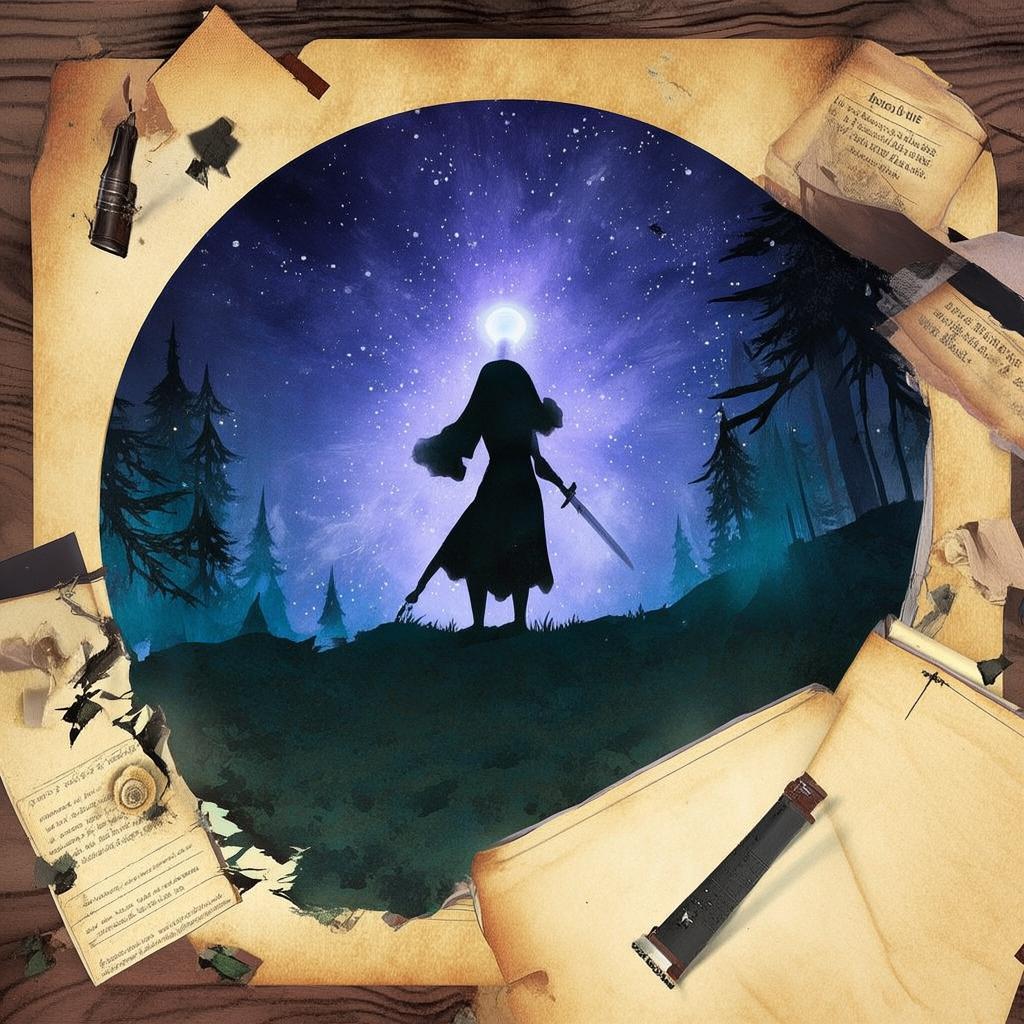The Dissonance of the Dissected Mind
The sun had barely risen over the horizon when Dr. Evelyn Carter, a renowned scholar in the field of postmodern philosophy, found herself standing in the dimly lit library of her alma mater. The air was thick with the scent of aged paper and the distant hum of the city outside seemed a world away. Evelyn had spent years dissecting the fabric of reality, exploring the boundaries between the physical and the metaphysical, but now, she found herself at the precipice of her own existential crisis.
The library was her sanctuary, a place where the lines between the real and the imagined were blurred, and where the postmodern professor could find solace in the chaos of thought. Today, however, the chaos had found her. It was a simple email that had set everything in motion—a message from an anonymous source, claiming to have discovered the truth about Evelyn's existence.
"Dear Dr. Carter," the email began, "I have been observing you for some time. Your work in postmodern philosophy is fascinating, but I have come to realize that you are not who you think you are."
Evelyn's heart raced as she read the words. She had spent her career challenging the very notion of identity and reality, yet now, she was the one being challenged. She felt a shiver run down her spine, a cold fear that she had never known before.
She spent the next hour poring over the email, its contents a labyrinth of cryptic messages and philosophical riddles. It spoke of a dissection, a breaking down of the self, and a revelation that would change everything she knew. The email ended with a single, chilling sentence: "You are the postmodern professor, and your reality is a construct."
Determined to uncover the truth, Evelyn began her investigation. She delved into her own work, revisiting the theories that had shaped her life. She remembered her mentor, Professor Harold, who had once told her, "The only thing that is real is the question itself." The words echoed in her mind, a reminder of the power of inquiry.

As she delved deeper, Evelyn's reality began to unravel. She found herself questioning everything she had ever known—her memories, her experiences, even her own existence. She visited the places where she had conducted her most profound research, hoping to find some trace of the truth.
One evening, as she wandered the streets of the city, she stumbled upon an old, abandoned building. The address was a place she had visited years ago, a place where she had once believed she had found the key to understanding reality. As she pushed open the creaking door, she was greeted by the musty smell of decay and the silence of the forgotten.
Inside, she found a room filled with books and papers, a place where she had once spent countless hours writing and thinking. On the wall, she saw a large, faded poster of herself, standing in front of a crowd of students, her arms raised in a gesture of triumph. It was a moment she had long since forgotten, but now, it seemed to be calling out to her.
As she approached the poster, she noticed something strange. The image of herself was not static; it was moving, shifting, as if it were alive. She reached out to touch it, and as her fingers brushed against the surface, the image began to change. The crowd around her grew, and the room expanded, filling her vision with a kaleidoscope of memories and possibilities.
In that moment, Evelyn realized that her entire life was a construct, a carefully crafted illusion that she had believed to be real. She was the postmodern professor, and her reality was the product of her own mind. The revelation was both liberating and terrifying, a realization that she had been living in a dream, and now, she had to wake up.
She found herself standing in the middle of the room, surrounded by the echoes of her past. The air was thick with the weight of her discovery, and she knew that her life would never be the same. She had to decide what to do with this newfound knowledge, to find a way to live in a world where the lines between the real and the imagined were no longer clear.
As she stood there, a thought occurred to her. Perhaps the answer lay not in rejecting her reality, but in embracing it. Perhaps she could use her understanding of postmodernism to reshape her existence, to create a new reality that was both true and meaningful.
With a deep breath, Evelyn stepped forward, her heart pounding with a mix of fear and excitement. She was ready to face the dissonance of the dissected mind, to navigate the chaos of her own creation, and to find her place in the ever-shifting landscape of reality.
The Dissonance of the Dissected Mind was a story of self-discovery, of the power of inquiry, and of the courage it takes to face the truth, even when it is not what one expects. It was a tale that would resonate with readers who have ever questioned their own existence, who have ever sought to understand the nature of reality, and who have ever wondered what it means to be truly alive.
✨ Original Statement ✨
All articles published on this website (including but not limited to text, images, videos, and other content) are original or authorized for reposting and are protected by relevant laws. Without the explicit written permission of this website, no individual or organization may copy, modify, repost, or use the content for commercial purposes.
If you need to quote or cooperate, please contact this site for authorization. We reserve the right to pursue legal responsibility for any unauthorized use.
Hereby declared.









